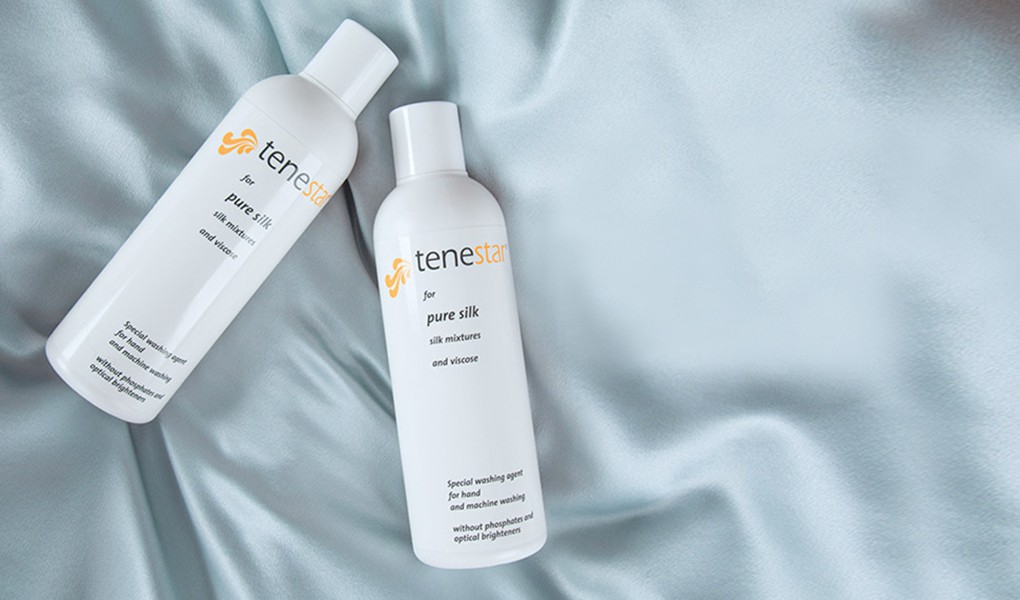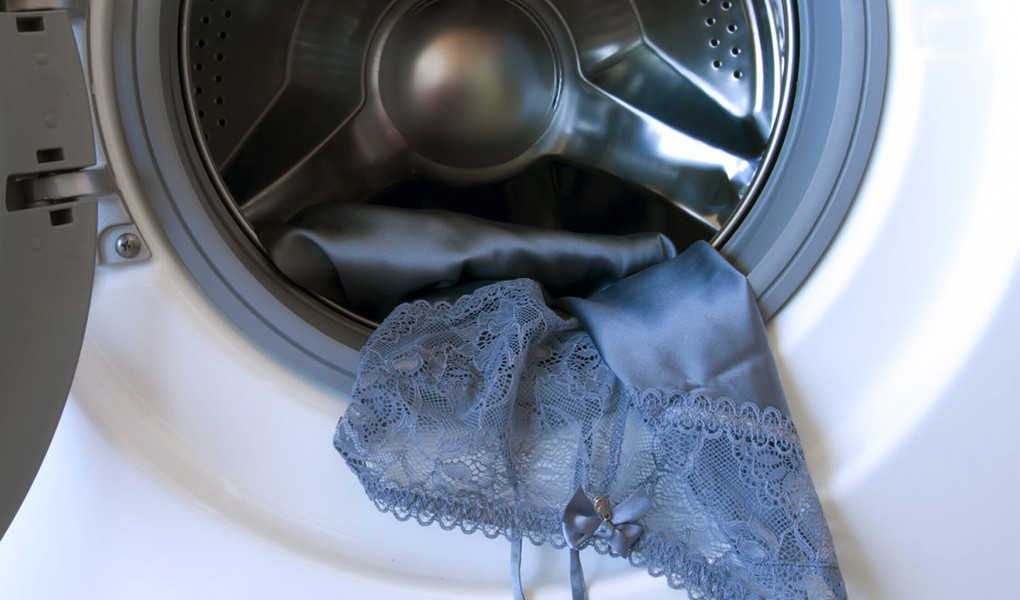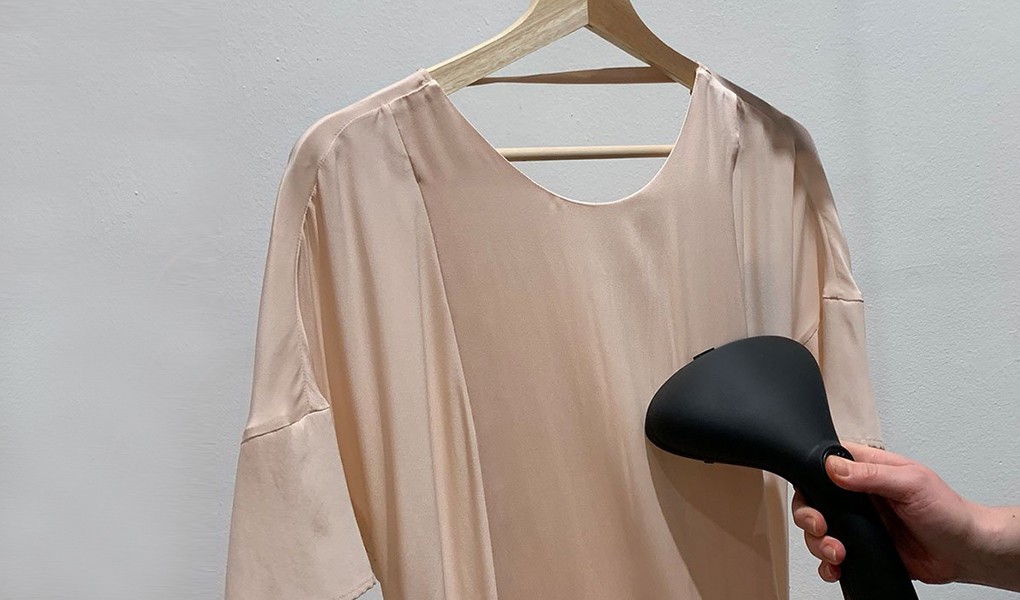At ElleSilk, we are often asked, can silk be washed? In short, yes! Your pure silk pillowcases and silk sheets are washable and it’s easy to do! There’s no need for expensive dry cleaning. You can opt for machine or hand washing following the silk cleaning instructions below. Closely adhering to these guidelines from ElleSilk can keep your sheets and pillowcases beautiful and luxurious for years to come. Washing silk has never been so easy.
Tip 1: How to Care for New Silk Pillowcases and Sheets
When you first unbox your silk sheets, read and follow the care directions especially if this is your first time washing. You’ll discover that silk is actually quite simple to care for, and requires only a bit of extra attention.
- Wash your new silk sheets before using, preferably by hand in cold water; a machine wash on a cold delicate cycle is also acceptable.
- Silk should always be laundered separately in a SILK-ONLY LOAD. All silk items should be washed in mesh laundry bags using a gentle luxury silk detergent (preferably one formulated for silk).
- Wash your silk sheets with the same frequency as you would any other type of sheet or bedding or whenever it is dirty or stained. Silk is naturally hypoallergenic and resistant to mold and dust mites, but still should be cleaned at regular intervals.
- Line dry your luxury silk sheets outside or hang indoors but in either case, keep them OUT OF SUNLIGHT. We don’t recommend putting silk sheets in the dryer; if you must do so, use only the “air” setting. Silk dries quickly; check every few minutes and add only the time necessary to dry.

Tip 2: Choosing the Right Detergent is Very Important
Whether you choose to hand wash or use a washing machine, choosing the best gentle silk detergent is an absolute necessity. Remember that silk is a natural fiber (this is part of what makes it so great for sensitive skin!). Washing it in detergents that are either too acidic or too alkaline will cause those fibers to harden. That’s why we recommend a mild detergent with neutral pH that is specially formulated for silk. This will help maintain the integrity of your fabric with every wash.
Along with harsh detergents, you should avoid using bleach, fabric softener, or any type of optical brightener when laundering your silk bed sheets and silk pillowcases. These are not good for the silk and can even discolor or damage the silk fibers. Dry cleaning silk is also not necessary. In most cases, you can wash everything from a silk pillowcase to a duvet cover either by hand or in your machine at home.
DO NOT USE any type of detergent with laundry enzymes on silk bedding or a silk garment. These “biological detergents” can be damaging to silk fiber; understanding why requires a small lesson in laundry enzymes, which are natural compounds included in detergents to break down stains. Many stains—including blood, sweat and other body fluids, eggs, cheese, dairy, and more—are protein-based. Even fatty and oil-based stains contain some protein. Laundry enzymes break down these proteins to release and remove stains.
However, silk is protein-based (made from the cocoon of a silk worm) and regularly washing it with an enzyme detergent will wear down its fibers and damage the integrity of the fabric. This is why you should never use an enzyme or biological detergent to wash silk or other protein-based fibers such as wool, cashmere, alpaca, furs, or feathers.
Tip 3: Simple Steps for Washing Silk Bed Linen
Wash silk in a separate, silk-only, load. Turn silk bed linens inside out before laundering, and place all silk items in fine mesh laundry bags to help keep the silk from tearing. This is particularly important if your machine has an agitator mechanism. Silk is lightweight; the delicate fabric has the potential to get caught under the agitator and tear and pull. The agitator and the inside of your machine can also have tiny nicks, burrs, and rough edges caused by other laundry items like zippers or buttons. A mesh wash bag will help protect your silk sheets from damage.
- Always launder silk separately in a ‘silk-only’ load
- Turn the silk pillowcases inside out
- Use mesh laundry bags when washing your silk bedding

Tip 4: Choose a Gentle Wash Cycle and Temperature
Machine washing silk in cool water to cold water is ideal. Temperatures above 80 degrees Fahrenheit (30 Celsius) can damage silk significantly. It is best to wash all silk products in cold water. Don’t use bleach, which will harm the fabric and cause it to yellow, or fabric softener which can leave residue on the fabric. The natural thread fibers of silk and our specialized charmeuse weaving technique create the softest silk available. Fabric softener is unnecessary and will leave an unpleasant residue on the fabric.
- Wash the silk sheets and silk pillowcases in cold water
- No bleach or fabric softener
Tip 5: How to Wash Silk Pillowcases and Silk Sheets By Hand
As stated before, we are always asked “can silk be washed?”. Yes, you can absolutely hand wash your silk sheets and silk pillowcases or put them in the washer. In fact, hand-washing silk is preferable to dry cleaning. Wash your silk items by themselves in cold water. Use only a gentle laundry soap formulated for silk. Submerge items and gently agitate with your hand; don’t rub or scrub. Thoroughly rinse out all soap.

Tip 6: How To Dry Your Silk Pillowcases and Sheets
Never wring out your silk items. Roll them in white towels to blot, or lay white towels out on the bed and blot sheets on top of them. Line or hang dry your silk — outdoors or inside — to preserve the fabric. Use a clothesline, a non-slip hanger, or a drying rack out of direct sunlight. Never put silk in direct sunlight, outdoors or inside. Exposure to sunlight can damage the silk fibers and may cause colors to fade, especially in darker colored silk.
Avoid wooden drying racks that can leech dyes or stains into silk. Your silk should dry in about 45 minutes depending on temperature and conditions. Don’t put silk items in the dryer. Heat can damage delicate silk fibers. If the dryer is absolutely necessary to use only ‘air’ setting for 15 minutes or less with NO fabric sheets or dryer balls. Remove sheets before completely dry. For a more in-depth guide, here is how to dry your silk pillowcases and silk sheets after a wash.
- Don’t wring or twist silk – blot with white towel instead
- Line or hang dry the silk sheets AWAY from sunlight
- Avoid direct sunlight — indoors or out
- Don’t use dryer
Tip 7: How to Iron Silk Sheets
Ironing is not always necessary. All silk products wrinkle after washing, but the threads will start to relax and straighten after a few nights’ uses. If you prefer to iron, one option is to iron only your silk pillowcases (since they’re all that show!) on the lowest setting available.
However, your silk bed sheets and bedding can be ironed if you wish. Always iron sparingly, only on the coolest setting with silk sheets and silk pillowcases inside out. A low temperature iron should glide smoothly over the fabric. You can also place a cloth between the iron and your silk item.
- Ironing silk is not always necessary
- Consider just ironing silk pillowcases (if needed)
- Iron sparingly, coolest setting, inside out

Tip 8: How to Store Silk Bedding
Store silk carefully in breathable plastic bags, away from direct sunlight, with moth repellent lavender sachets or cedar balls.
- Breathable bag
- Away from sunlight
- Lavender sachets/cedar balls

